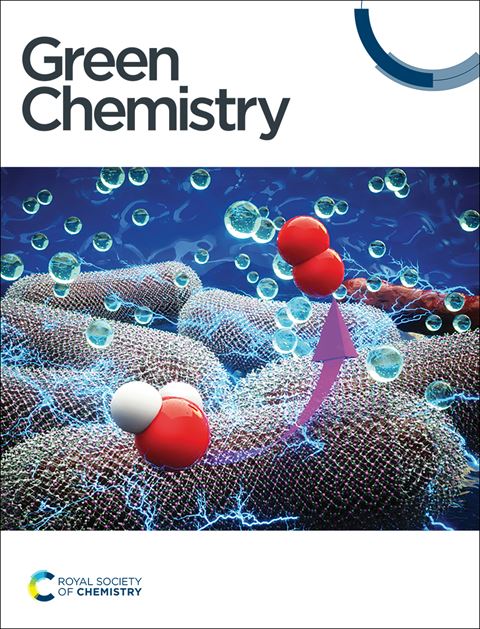Dual-function thiourea for photochemical recovery of precious metals in an Fe(iii)-oxalate based system†
IF 9.3
1区 化学
Q1 CHEMISTRY, MULTIDISCIPLINARY
引用次数: 0
Abstract
It is urgent to bring out an eco-friendly and high-efficiency strategy for efficient hydrometallurgical recovery of precious metals (PMs) to avoid the use of highly corrosive and strongly poisonous solvents. In this work, it has been found that PMs of Au, Pt, and Pd can be almost completely recovered at room temperature (RT) via a simulated-sunlight (SSL) irradiation route. Maximum recovery amounts of Au, Pt, and Pd are 6.0, 1.2, and 5.0 mg L−1 in an appropriate FOC-T system including 0.02/0.05/0.05 mol L−1 Fe(iii)-oxalate complexes (FOC) and 40/60/60 g L−1 thiourea, respectively. Thiourea plays a dual-function role in increasing the amount and prolonging the lifetime of reactive oxygen radicals in the photo-dissolution system by the generation of sulfate radicals from thiourea oxidation during the photodegradation of FOC, and constructing the coordination of PMs during the photochemical dissolution process using thiocarbonyl groups of thiourea as the active coordination sites. As a result, the FOC-T system exhibits a superiority in the recovery performance of PMs with a low FOC concentration compared with the FOC-Cl system (∼100% versus <20%), and the obtained PM-containing lixivium can act well as a precursor similar to commercial H2PtCl6, HAuCl4, and (NH4)2PdCl4 for catalyst preparation. In brief, this work provides a new approach for the photochemical recovery of PMs in a green FOC-T dissolution system and enriches the development of novel recovery methods for PMs.

在基于铁(iii)-草酸盐的系统中光化学回收贵金属的双重功能硫脲†
本文章由计算机程序翻译,如有差异,请以英文原文为准。
求助全文
约1分钟内获得全文
求助全文
来源期刊

Green Chemistry
化学-化学综合
CiteScore
16.10
自引率
7.10%
发文量
677
审稿时长
1.4 months
期刊介绍:
Green Chemistry is a journal that provides a unique forum for the publication of innovative research on the development of alternative green and sustainable technologies. The scope of Green Chemistry is based on the definition proposed by Anastas and Warner (Green Chemistry: Theory and Practice, P T Anastas and J C Warner, Oxford University Press, Oxford, 1998), which defines green chemistry as the utilisation of a set of principles that reduces or eliminates the use or generation of hazardous substances in the design, manufacture and application of chemical products. Green Chemistry aims to reduce the environmental impact of the chemical enterprise by developing a technology base that is inherently non-toxic to living things and the environment. The journal welcomes submissions on all aspects of research relating to this endeavor and publishes original and significant cutting-edge research that is likely to be of wide general appeal. For a work to be published, it must present a significant advance in green chemistry, including a comparison with existing methods and a demonstration of advantages over those methods.
 求助内容:
求助内容: 应助结果提醒方式:
应助结果提醒方式:


